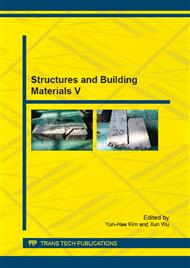p.69
p.74
p.85
p.88
p.94
p.101
p.106
p.112
p.116
Robust Optimization for Shape Design of Arch Dams Based on Strain Energy
Abstract:
The strain energy of dam body and its sensitivity to the deformation modulus of foundation are taken as objective functions, feasibility robust constraint of stress is taken into account with the consideration of uncertainty of foundation deformation modulus, and a robust optimization model for shape design of arch dams is established based on strain energy. A formula of sensitivity of dam strain energy to deformation modulus of foundation is derived and a relevant algorithm is proposed. The optimization of a planned arch dam indicates that, the dam strain energy and its sensitivity to foundation deformation modulus of optimal design are reduced 2.29% and 15.51%, respectively, of that of initial design, and the validity of the proposed model is demonstrated.
Info:
Periodical:
Pages:
94-100
Citation:
Online since:
July 2015
Authors:
Keywords:
Price:
Сopyright:
© 2015 Trans Tech Publications Ltd. All Rights Reserved
Share:
Citation:


